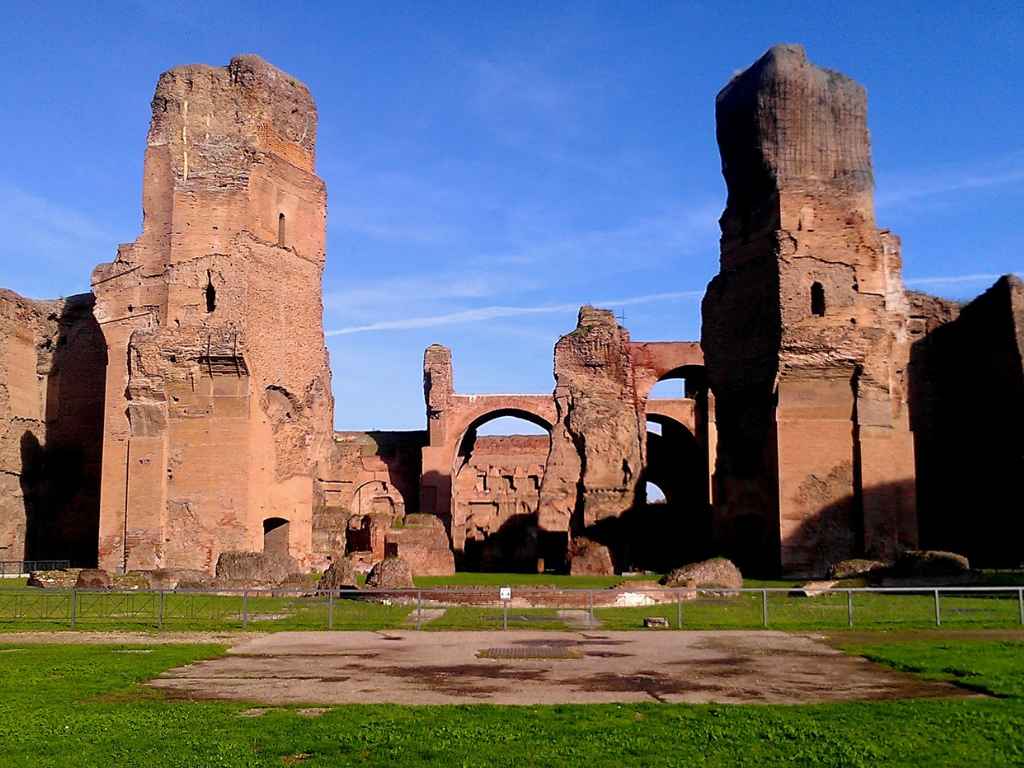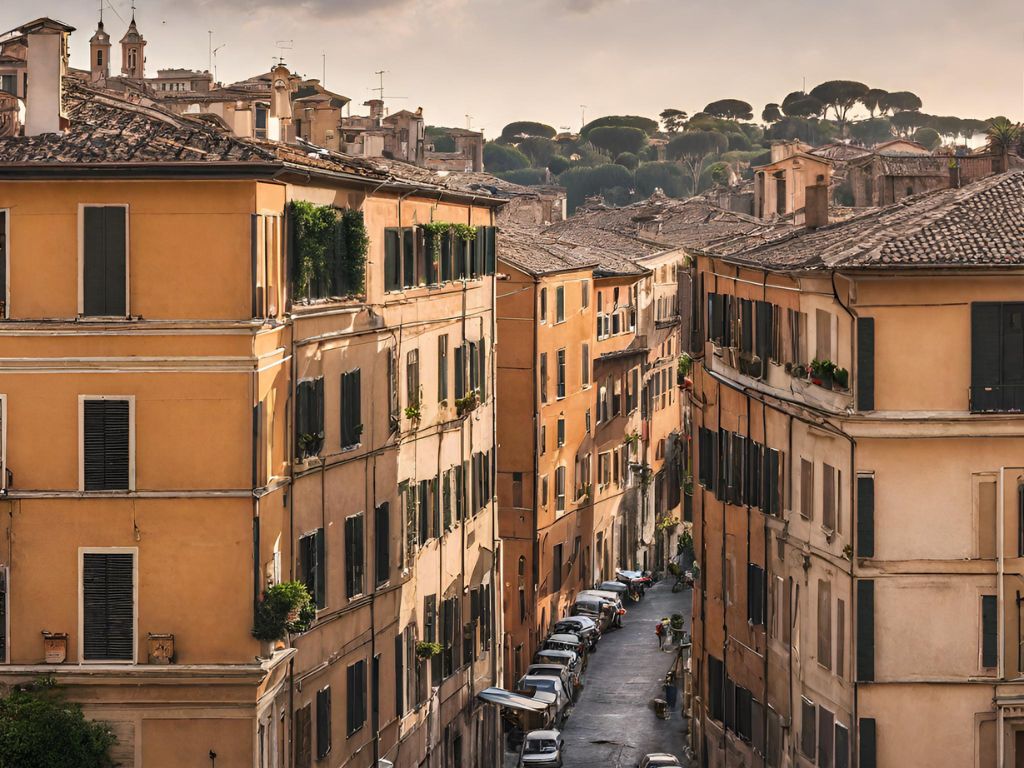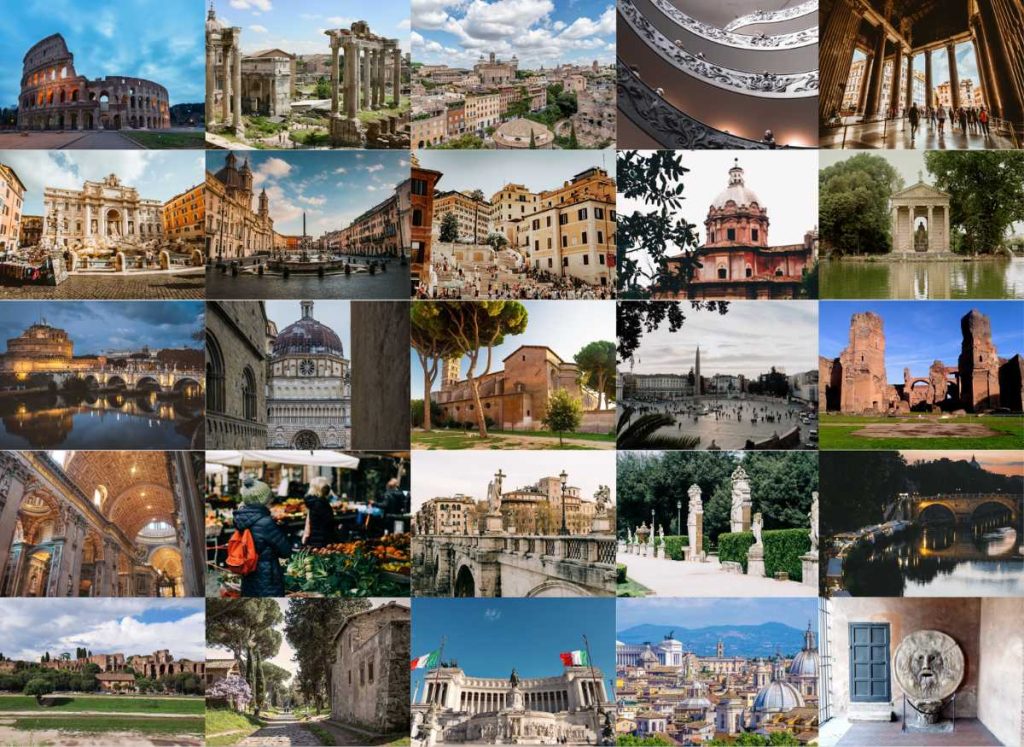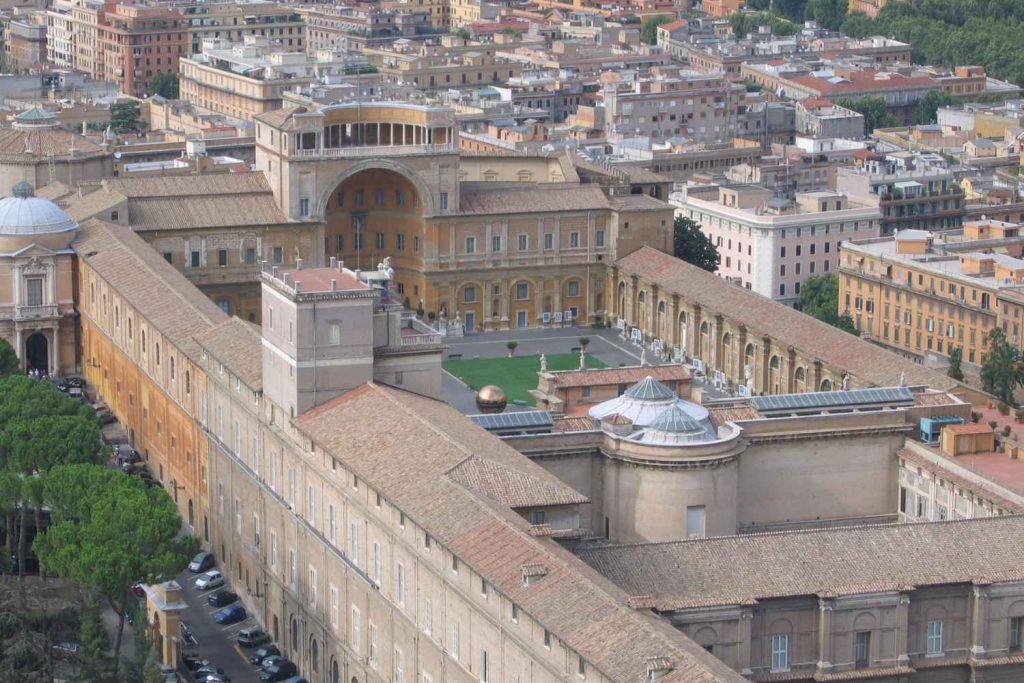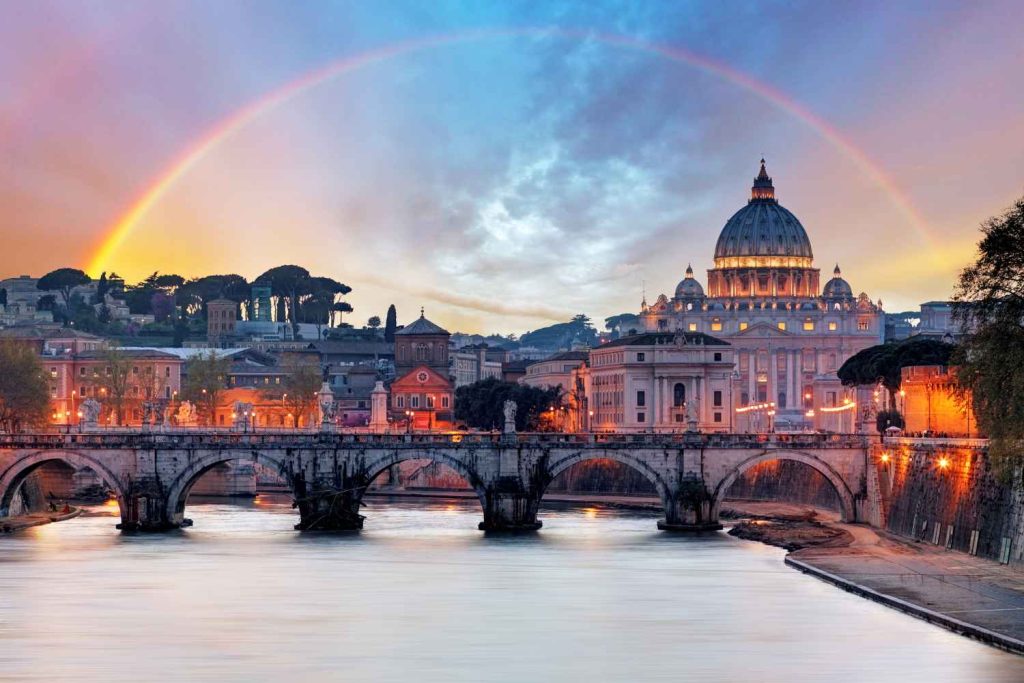The Baths of Caracalla, a timeless testament to the majesty and sophistication of the Roman Empire
When one thinks of Rome, images of ancient grandeur, timeless beauty, and unparalleled historical significance instantly come to mind. Among the many remarkable relics of the Roman Empire, the Baths of Caracalla stand as an awe-inspiring testament to the magnificence of this ancient civilization. Situated just a stone’s throw away from the heart of the Eternal City, these ruins offer an unforgettable journey through time, where visitors can immerse themselves in the opulent lifestyle of Roman aristocracy.
Unveiling the History
As one approaches the Baths of Caracalla, the very air seems to whisper tales of a bygone era. These monumental ruins, shrouded in the mists of time, unfold an extraordinary saga of imperial ambition and architectural mastery. Commissioned by the Roman Emperor Caracalla in the early 3rd century AD, these baths were more than just a place for cleansing; they were a manifestation of Roman grandeur.
The story begins in AD 212, when Emperor Caracalla, known for his extravagant lifestyle and larger-than-life persona, embarked on an audacious project: the construction of a bath complex that would rival all others in both scale and splendour. This venture was not merely an expression of vanity; it was a political statement, a means to secure his place in the annals of history.
The undertaking was nothing short of monumental. Imagine the toil of thousands of labourers, the ingenuity of architects and engineers, and the vision of artists and craftsmen coming together to create a sanctuary of luxury and indulgence. It was a testament to the might and ambition of the Roman Empire.
Covering a staggering 25 hectares, the Baths of Caracalla were a sprawling complex that dwarfed even their predecessors. Their sheer size, comparable to that of a small city, speaks volumes about the scale of this undertaking. The construction spanned a mere five years, an astonishing achievement given the technology and resources available at the time.
Stepping through the imposing entrance, the immense walls of brick and concrete loom overhead. Rising to a height of 25 metres, these walls symbolise the formidable strength and stability of the Roman Empire. As you pass through these ancient gates, you can’t help but wonder about the hands that shaped these colossal bricks and the sweat and determination that went into their creation.
The Baths of Caracalla were not merely a utilitarian facility; they were an architectural marvel that blended form and function seamlessly. Every detail, from the layout of the chambers to the materials used, was carefully considered to create an atmosphere of opulence and luxury. This was a place where the Roman elite could immerse themselves in the lap of extravagance.
Grandeur in Ruins
Approaching the Baths of Caracalla, one is immediately struck by the imposing walls of brick and concrete that encircle the site. These walls, towering to a height of 25 metres, evoke a sense of awe and reverence. The sheer scale of the complex is a testament to the unparalleled ambition and resources of the Roman Empire.
Stepping inside this archaeological treasure trove, one is transported back in time to an era of opulence and extravagance. The grandeur of the Baths of Caracalla is unmistakable, even in its ruined state. The main hall, or natatio, was a vast open-air swimming pool surrounded by columns, statues, and lush gardens, offering a glimpse into the leisurely pursuits of the Roman elite.
Architecture and Engineering Marvel
The Baths of Caracalla are a testament to Roman engineering prowess. The intricate design and construction of this monumental complex are a testament to the meticulous planning and engineering ingenuity of the time. The baths were not only functional but also visually striking, a true masterpiece of Roman architecture.
One of the most impressive features of the baths is the hypocaust system, an intricate network of underground tunnels and chambers that circulated hot air to heat the floors and walls, ensuring that the interior spaces were luxuriously warm even during the coldest months of the year. This innovation, a marvel of Roman engineering, allowed for a year-round use of the baths.
The central hall of the baths, known as the frigidarium, was a colossal domed chamber with a diameter of 29 metres, supported by eight massive granite columns. The dome itself was a stunning architectural achievement, a precursor to the magnificent domes of later Roman and Renaissance architecture.
A Glimpse into Roman Leisure
As one wanders through the ruins, it becomes evident that the Baths of Caracalla were not merely a place for bathing but also a centre of social interaction and entertainment. The complex included a variety of amenities such as libraries, gardens, and shops, providing a comprehensive leisure experience for its patrons.
The library, or bibliotheca, was a haven for scholars and intellectuals, housing a vast collection of scrolls and books. It was a place where the Roman elite could indulge in intellectual pursuits while relaxing in the lap of luxury.
The sprawling gardens, adorned with statues and fountains, offered a tranquil escape from the bustling city. Strolling through these gardens, one can almost imagine Roman nobility enjoying the serenity and beauty of nature.
The magnificent Baths of Caracalla
Art and Culture
Art and culture played a significant role in Roman society, and the Baths of Caracalla were no exception. The walls of the baths were once adorned with intricate mosaics, frescoes, and marble sculptures that depicted scenes from mythology, history, and daily life. These exquisite works of art not only added to the grandeur of the baths but also served as a testament to the cultural richness of the Roman Empire.
One of the most renowned sculptures from the Baths of Caracalla is the “Farnese Bull,” a colossal marble group depicting the mythological tale of Dirce. This masterpiece, now housed in the National Archaeological Museum of Naples, is a prime example of the exceptional craftsmanship of the time.
Decline and Abandonment
As the Roman Empire entered a period of decline and instability in the 4th and 5th centuries, the Baths of Caracalla fell into disrepair and disuse. The once-thriving complex became a victim of neglect, and its magnificent marble and precious metals were looted by successive generations.
During the Middle Ages, the site was used as a quarry for building materials, further contributing to its deterioration. However, despite centuries of neglect and the ravages of time, the ruins of the Baths of Caracalla continue to stand as a testament to the enduring legacy of ancient Rome.
Preservation and Restoration
In the modern era, efforts have been made to preserve and protect this remarkable archaeological site. The Baths of Caracalla are now a popular tourist attraction and have been partially restored to their former glory. Visitors can explore the ruins, marvel at the architectural achievements, and gain a deeper understanding of Roman life and culture.
The site also serves as a venue for cultural events, including open-air concerts and operatic performances. These events bring the ancient ruins to life in a way that allows visitors to experience the same sense of grandeur and entertainment that Roman citizens enjoyed centuries ago.
These colossal ruins offer a captivating glimpse into the opulent lifestyle of Roman aristocracy, their engineering prowess, and their deep appreciation for art and culture.
As you explore the Baths of Caracalla, you can’t help but be transported back in time, imagining the laughter of bathers, the rustling of scrolls in the library, and the grandeur of a bygone era. It is a place where history comes to life, where the legacy of Rome lives on in its most magnificent form.
Visiting the Baths of Caracalla is not just a journey through time; it is an opportunity to connect with the enduring spirit of Rome and to witness the architectural and cultural marvels of an ancient civilization that continues to inspire and captivate us to this day. It is a must-visit destination for anyone who seeks to delve into the rich tapestry of Roman history and experience the grandeur of the past in the heart of the Eternal City.
How to find The Baths of Caracalla
To get to the Baths of Caracalla (Terme di Caracalla) from central Rome, you have a few transportation options. The Baths of Caracalla are located to the south of the historic center of Rome. Here are the steps for getting there:
1. Metro:
- The most convenient way to reach the Baths of Caracalla is by taking the metro.
- From central Rome, head to the nearest metro station. If you’re near the Colosseum or Roman Forum area, you can walk to the Colosseo metro station (Line B).
- Take Line B (the blue line) towards Laurentina.
- Get off at the Circo Massimo metro station. The Baths of Caracalla are within walking distance from there.
2. Walking Directions:
- Once you exit the Circo Massimo metro station, follow the signs or ask locals for directions to the Baths of Caracalla (Terme di Caracalla). It’s approximately a 10-15 minute walk from the metro station to the Baths.
- The Baths of Caracalla are an impressive ancient Roman archaeological site, and you’ll recognize them by their imposing ruins.
3. Public Bus:
- Alternatively, you can take a public bus from central Rome to the Baths of Caracalla. Check the current bus routes and schedules as they may change.
- Bus lines that stop near the Baths include Bus 118 and Bus 160.
Important Note:
- Make sure to check the opening hours of the Baths of Caracalla before your visit, as they may vary depending on the season and special events.
By following these directions, you’ll be able to reach the Baths of Caracalla from central Rome and explore this ancient Roman historical site.
More articles you might like...
You can find more great Rome content in the following categories;
All about Vatican City Commonly Asked Rome Questions Rome Accommodation Rome Food and Drink Rome History and Culture Rome Neighbourhoods Rome Tours and Must-See Attractions
